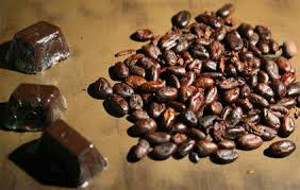 dy the world’s biggest grower of flavoured beans used in fine chocolate, is poised to extend its lead over Brazil as the top cocoa producer in the Americas as exporters forecast a record harvest.
dy the world’s biggest grower of flavoured beans used in fine chocolate, is poised to extend its lead over Brazil as the top cocoa producer in the Americas as exporters forecast a record harvest.Cocoa output probably will rise about 9 per cent to 240,000 metric tons in 2014 on government assistance programs, new plantings and as concern eases that the El Niño weather phenomenon would curb yields, according to Ivan Ontaneda, president of Ecuador’s National Cocoa Exporters Association, known as Anecacao. That’s 14 per cent more than the International Cocoa Organization’s 210,000-ton forecast and 20 per cent higher than its estimate for Brazil, according to data compiled by Bloomberg, based on information from the group.
The South American nation is taking advantage of increased demand for fine chocolate in emerging markets as economic growth boosts salaries and makes luxury items more accessible, Ontaneda said. A new trade agreement reached last month with the European Union, the world’s biggest consumer of fine chocolate, will also help spur investment in and production of Ecuadorean cocoa, he said in an interview.
“Weather conditions in the fields have been good so far,” said Ontaneda, who’s also chief executive officer of cocoa exporter Eco-Kakao SA. “There’s not a single cocoa bean that goes unsold.”
Arriba Beans
An outbreak of the witches’ broom fungal disease in Brazil reduced the nation’s crop last year. Repeated outbreaks of the disease since the 1980s displaced Brazil from the position of top producer and have since discouraged planting, while West African countries took the lead. The Ivory Coast is the world’s top producer, followed by Ghana.
While Ecuador’s Arriba varietal is used in fine chocolate, ordinary or bulk beans are used for mass production. Chocolate makers like Nestlé SA, the world’s biggest food company, operate in the Andean nation.
Australia’s Bureau of Meteorology said yesterday it remains on El Niño watch even as the onset of the weather event that brings drought to the Asia-Pacific region and heavier-than-usual rains to South America may be delayed to the end of the year.
Credit Lines
The nation’s Agriculture Ministry is working to develop credit lines for growers and already provides fertilisers and training on how to prune and improve post-harvest fermentation that gives the cocoa its distinctive flavors, Ontaneda said.
The government is also creating incentives for banana growers, the country’s biggest agricultural export, to switch to cocoa because it pay workers more and requires fewer environmentally-damaging chemicals, he said.
Price Surge
Cocoa has jumped 19 per cent to $3,216 a ton on the ICE Futures US in New York so far this year. Prices will fall to an average $2,992 a ton in 2015, according to the median forecast of five analysts surveyed by Bloomberg.
Prices may rise to as high as $3,400 by the end of the year and won’t fall below $2,800 as growing demand for fine chocolate in China benefits global producers, according to Ontaneda. He forecasts a 100,000-ton supply deficit this year and a shortage of about 800,000 tons by 2020. That should translate into long-term prices of $3,000 to $4,000, he said.
Exporters are also working to improve the traceability of beans to improve Ecuador’s reputation as a high-quality producer. Consumers increasingly want to know where their chocolate comes from as well as what labour and environmental conditions are in the country of origin, Ontaneda said.
“We don’t want to only increase production, we want that production to be very high quality,” he said. “In this, Ecuador is a global benchmark.”





